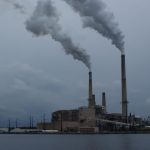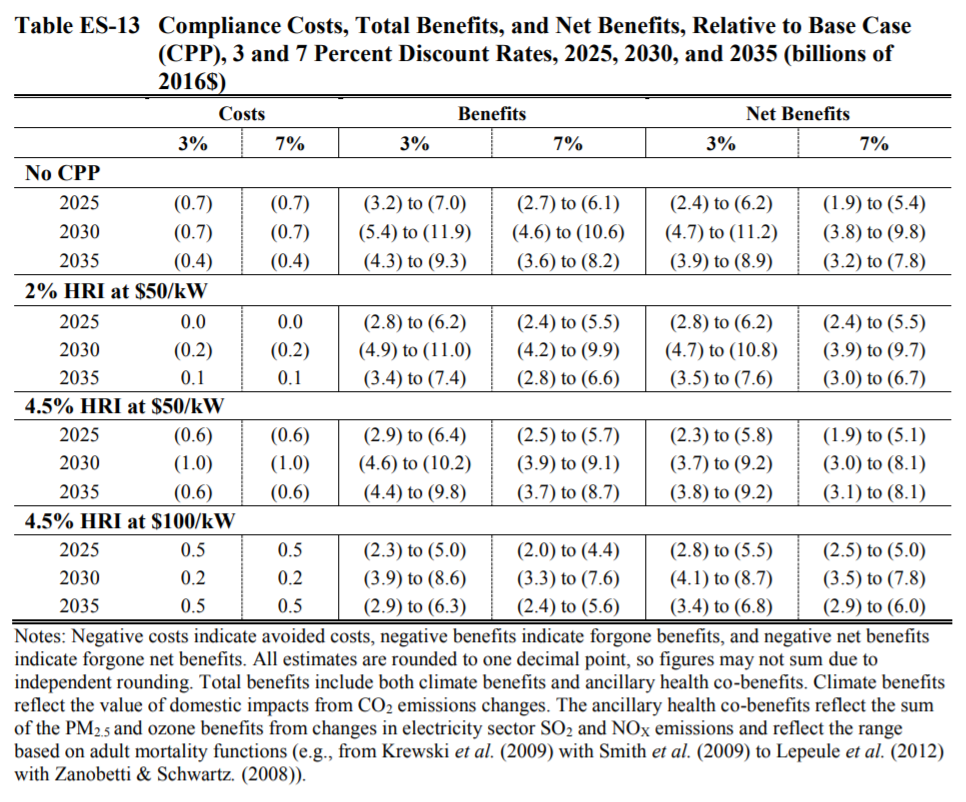By Jessica Wentz
 On Tuesday, August 21, EPA published a proposed rule to replace the Clean Power Plan. The proposal, entitled the “Affordable Clean Energy Rule,” would establish a framework for controlling CO2 emissions from existing power plants which is significantly less effective and environmentally protective than its predecessor. Here are six important things to know about the proposed rule:
On Tuesday, August 21, EPA published a proposed rule to replace the Clean Power Plan. The proposal, entitled the “Affordable Clean Energy Rule,” would establish a framework for controlling CO2 emissions from existing power plants which is significantly less effective and environmentally protective than its predecessor. Here are six important things to know about the proposed rule:
1. The Proposal Sets a Very Low Bar for Emission Reductions. The Clean Air Act mandates that the performance standards established for existing sources under Section 111(d) must reflect the “best system of emissions reduction” (BSER) for the pollutant and source category being regulated. EPA is proposing to define the BSER for greenhouse gas (GHG) emissions from existing power plants as on-site, heat-rate efficiency improvements. In other words, the performance standards established for power plants would only reflect those emission reductions that can be achieved through making the existing plants more efficient – they would not reflect the much larger reductions that could be achieved by switching to cleaner energy sources and improving demand-side energy efficiency (often referred to as measures “outside the fence line” of power plants). As a result, the standards will be considerably less stringent.
The standards may also fail to ensure emissions reductions at all insofar as there may be a “rebound effect” wherein plants that implement heat-rate improvements may be called upon to run more hours, thus increasing the total amount of CO2 generated (while still complying with performance standards). EPA explicitly recognizes the potential for such a rebound effect in the proposal without providing any recommendation for mitigating the effect.
2. There are no numerical standards or targets for GHG reductions, and states will have wide latitude to establish their own performance targets. The Clean Power Plan established numerical emission reduction targets for states based on the application of the BSER to power plants within those states. These targets were an essential element of the implementation framework insofar as they provided a benchmark against which to gauge state progress. The Affordable Clean Energy Rule does not establish any emission reduction standards or targets for states. Rather, EPA is proposing to issue a list of “candidate technologies” that states can use to establish standards of performance for individual power plants within their jurisdiction. EPA is also proposing to let states set weaker standards (or no standards at all) based on their assessment of the plant’s “remaining useful life” (based on language in Section 111(d) which recognizes that performance standards should account for this factor). In effect, the rule allows states to decide how much to cut emissions, if at all, rather than providing numeric targets for them.
3. The proposal would have a net cost to U.S. citizens of billions of dollars. Many environmental and public health advocates have expressed concern about the foregone health and emissions benefits associated with this proposal. EPA had projected that the original Clean Power Plan would reduce CO2emissions by approximately 415 million tons relative to a no action baseline, whereas the Affordable Clean Energy rule would only reduce CO2 emissions by 14-27 million tons relative to a no action baseline. This emissions increase corresponds with a significant reduction in health benefits: EPA estimates that replacing the Clean Power Plan with this proposal will cause an additional 470-1,400 premature deaths, 48,000 cases of exacerbated asthma, and 21,000 missed school days as compared to a baseline where the Clean Power Plan is implemented.
There are also staggering differences in monetized net benefits from the two rules. It is somewhat difficult to compare these benefits because, as we noted in our comments on the proposal to repeal the Clean Power Plan, EPA has significantly revised its cost-benefit methodology to downplay benefits and overstate costs associated with climate regulations. Before it changed its methodology, EPA had estimated that the Clean Power Plan would deliver net health and climate benefits ranging from $26-$46 billion per year by 2030. EPA now claims that replacing the Clean Power Plan with this proposal “could provide $400 million in net benefits” but the underlying regulatory impact analysis (RIA) completely undermines this claim. Even with its modified cost-benefit methodology, EPA finds that replacing the Clean Power Plan with this rule would actually result in billions of dollars of net “foregone benefits” (i.e. costs) under every scenario analyzed. This is illustrated in Tables ES-12 and ES-13 of the RIA:
4. The proposal includes major changes to permitting rules that could lead to additional increases in air pollution. EPA quietly incorporated a major modification to the New Source Review (NSR) program into this proposal – specifically, a new provision which would allow states the option to adopt a new test for determining whether a physical or operational change at a power plant qualifies as a “major modification” (which triggers a variety of NSR requirements pertaining to permitting, emissions monitoring, and emissions control). Currently, the NSR process is triggered if a change is predicted to cause a significant net increase in the facility’s annual emissions, but under the new test, sources could use an alternate test whereby NSR is only triggered if there is a significant net increase in hourly emissions. EPA claims this change is needed to encourage utilities to invest in efficiency improvements (even though the rule already requires this) but critics contend that it is just another way of undermining Clean Air Act protections by allowing facilities to increase their emissions without triggering NSR requirements.
5. The legal fate of the proposal depends on the legal fate of the Clean Power Plan, which is already tied up in litigation. The D.C. Circuit granted EPA’s request to place the litigation involving the Clean Power Plan on hold pending EPA’s reconsideration of the rule. One of the key questions in that case was whether Section 111(d) of the Clean Air Act authorized EPA to issue quantitative emission guidelines based on a BSER that includes “beyond the fence line” measures such as fuel switching. In this proposal and the proposal to repeal the Clean Power Plan, EPA made it very clear that it no longer believes it has such authority. Indeed, this is EPA’s entire rationale for confining the BSER to on-site heat rate improvements. One critical question is whether the D.C. Circuit will agree with EPA’s new interpretation, as this bears on the fate of both rules. It would therefore make sense for the D.C. Circuit to revisit the case sooner rather than later to issue a decision on this matter, as that would be more efficient from a judicial management perspective and would shorten the lag time before one of the rules can take effect.
6. The proposal will not save the coal industry. President Trump and EPA claim that this rule will help save the coal industry, but there is little evidence to support this. There is no doubt that the coal industry is in decline: since 2010, hundreds of coal-fired power plants – nearly 40% of the U.S. coal fleet – have been retired. Most experts believe that this decline is largely driven by many different factors, including the decreasing price of natural gas and renewables, changes in consumer preferences, and other forms of regulation (e.g., controls on conventional air pollutants). The proposed replacement rule would have a very modest effect on the industry as compared with these factors, and the coal industry would still face the prospect of regulation by states and the next administration. In light of all this, experts anticipate that market forces will continue to drive the coal industry’s decline in the foreseeable future. Indeed, according to this report just issued by West Virginia University, the only thing propping up the coal industry in recent years has been exports, and those are endangered by President Trump’s trade war.



